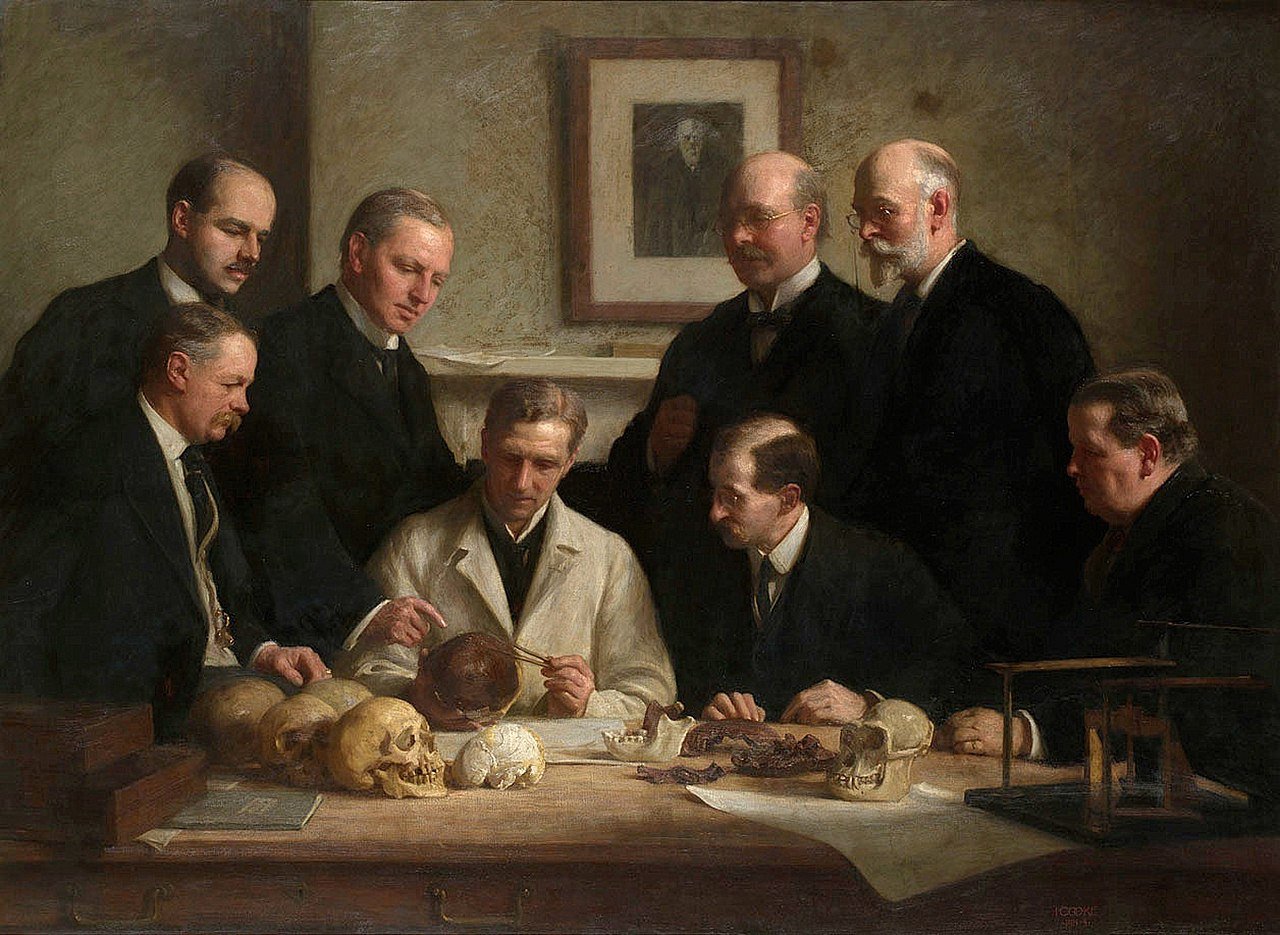The Piltdown Man Hoax of 1912 stands as one of the most notorious instances of scientific deception in history. On December 18, 1912, the world was introduced to the Piltdown Man, a supposed “missing link” between apes and humans. This discovery, made in Piltdown, England, captivated the scientific community and the public alike, only to be revealed as an elaborate forgery over four decades later, in 1953.
The Piltdown Man was initially presented as a remarkable find, consisting of fossilized remains that seemed to bridge the evolutionary gap between apes and humans. The supposed evidence included a human-like skull and an ape-like jaw, both discovered in a gravel pit in Piltdown. The combination of these elements suggested an ancient creature with a human-like brain and an ape-like jaw, providing a tantalizing glimpse into our evolutionary past.
For several decades, the Piltdown Man remained a prominent figure in discussions surrounding human evolution. However, as the field of paleoanthropology advanced and new discoveries were made, doubts began to emerge about the authenticity of the Piltdown remains. Scientists started to question why the Piltdown Man seemed to possess a combination of features that were not found in any other known fossils.
It wasn’t until 1953 that the truth behind the Piltdown Man was finally uncovered. Detailed analysis and scrutiny revealed that the Piltdown Man was an elaborate hoax, carefully constructed to deceive the scientific community. The skull was determined to be that of a medieval human, while the jaw belonged to an orangutan. The bones were cleverly stained and manipulated to give the appearance of age, further adding to the deception.
The revelation of the Piltdown Man hoax sent shockwaves through the scientific community. It exposed the vulnerability of even the most esteemed scientists and institutions to deception and fraud. The impact of this deception was far-reaching, as it had influenced scientific thinking and research for over four decades. It also highlighted the importance of scientific integrity and the need for rigorous scrutiny in the pursuit of knowledge.
Several theories have been proposed regarding the identity of the perpetrator of the Piltdown Man hoax. Some believe it was the work of a single individual, while others suggest a conspiracy involving multiple individuals. The true identity of the hoaxer remains a mystery to this day, adding an additional layer of intrigue to this already captivating tale.
The exposure of the Piltdown Man hoax prompted a reevaluation of other fossil finds and scientific claims. It served as a cautionary tale, reminding scientists to approach new discoveries with skepticism and rigorous scrutiny. The Piltdown Man hoax also led to advancements in scientific techniques for dating and analyzing fossils, ensuring that future frauds would be more easily detected.
Today, the Piltdown Man hoax is remembered as a cautionary tale and a reminder of the importance of scientific integrity. The event serves as a reminder that even the most convincing evidence should be subject to scrutiny and verification. It also highlights the resilience of the scientific community, which ultimately uncovered the truth and continued to advance our understanding of human evolution.
For further information on the Piltdown Man hoax, please refer to the following references:
- Encyclopedia Britannica – Piltdown Man
- Natural History Museum – The Piltdown Hoax
- Smithsonian Magazine – The Piltdown Man Hoax, 100 Years Ago
SEO Excerpt:
Discover the intriguing story of the Piltdown Man Hoax (1912), one of the most infamous scientific deceptions in history. Uncover the details of this elaborate forgery and its impact on the study of human evolution. Explore the importance of scientific integrity and the lessons learned from the Piltdown Man hoax.

